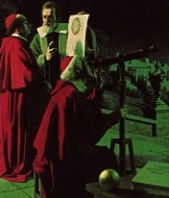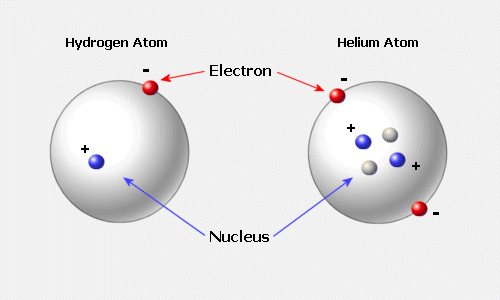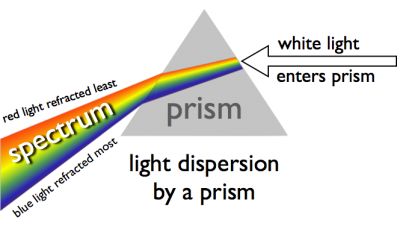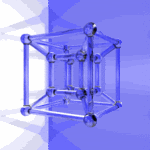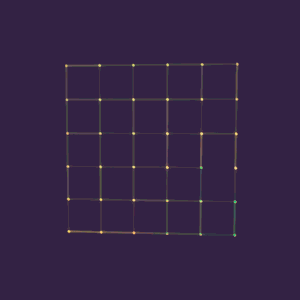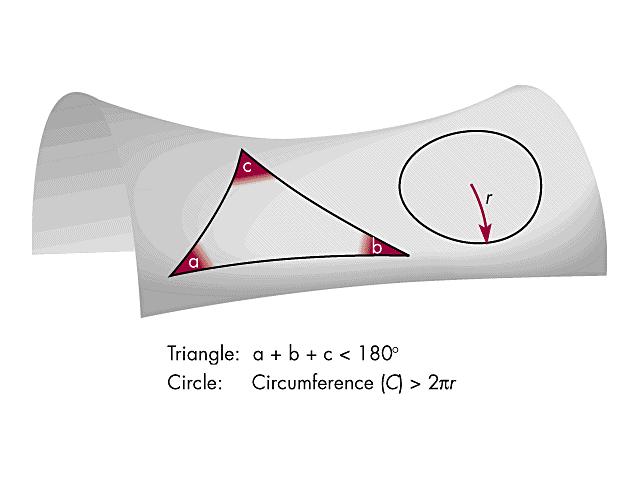
Einstein's insights
Albert Einstein, Relativity: The Special and General Theory, 1916.
Navigating the site:

Scientists
Special relativity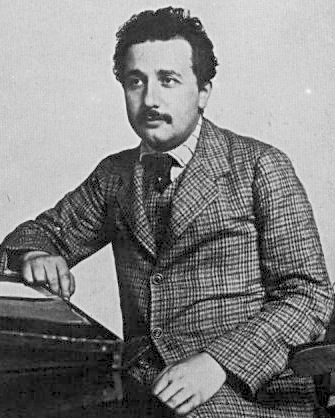
"As a result of analysis of the physical conceptions of time and space, it became evident that in reality there is not the least incompatibility between the principle of relativity and the law of propagation of light, and that by systematically holding fast to both these laws a logically rigid theory could be arrived at."
"This theory has been called the special theory of relativity to distinguish it from the extended theory, . . ."
p. 19-20.
"There is hardly a simpler law in physics than that according to which light is propagated in empty space. Every child at school knows, or believes he knows, that this propagation takes place in straight lines with a velocity C = 300,000 kilometers / second."

". . . this velocity is the same for all colours . . . . the velocity of propagation of light cannot depend on the velocity of motion of the body emitting the light."
p. 17.
186,000 mile / second or 11,160,000 miles in every minute
"Who would imagine that this simple law has plunged the conscientiously thoughtful physicist into the greatest intellectual difficulties?"
p. 18.
"The rigid rod is thus shorter when in motion than when at rest, and the more quickly it is moving, the shorter is the rod."
p. 35.
"As a consequence of its motion the clock goes more slowly than when at rest."
p. 36.
"Now in practice we can move clocks and measuring-rods only with velocities that are small compared with the velocity of light; hence we shall hardly be able to compare the results of the previous section directly with the reality."
p. 38.
"By uniting these two postulates we obtained the law of the transformation for the rectangular co-ordinates x, y, z, and the time t of the events which constitute the processes of nature."
p. 42.
"Every general law of nature must be so constituted that it is transformed into a law of exactly the same form when, instead of the space-time variables x, y, z, t, of the original co-ordinate system K, we introduce new space-time variables. . . . . For the main part, however, this modification affects only the laws for rapid motions, in which the velocities of matter v are not very small as compared with the velocity of light. We have experience of such rapid motions only in the case of electrons and ions; for other motions the variations form the laws of classical mechanics are too small to make themselves evident in practice."
pp. 42 & 44.
"The non-mathematician is seized by a mysterious shuddering when he hears of 'four-dimensional' things, by a feeling not unlike that awakened by thoughts of the occult. And yet there is no more common-place statement than that the world in which we live is a four-dimensional space-time continuum."
p. 55.
"The four-dimensional mode of consideration of the 'world' is natural on the theory of relativity, since according to this theory time is robbed of its independence."
p. 56.
". . . every motion must be considered only as a relative motion."
p. 59.
General relativity
"If we pick up a stone and then let it go, why does it fall to the ground?"
"a magnet attracts a piece of iron . . ."
"the magnet always calls into being something physically real in the space around it, that something we call the 'magnetic field'. In its turn this magnetic field operates on a piece of iron, so that the latter strives to move toward the magnet."
"the transmission of electromagnetic waves"
p. 63.

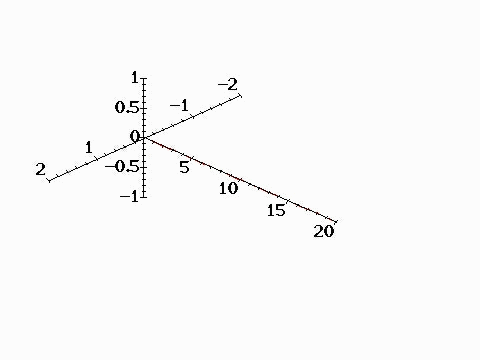
"The effects of gravitation also are regarded in an analogous manner."
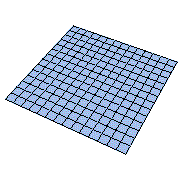 "The action of the earth on the stone takes place indirectly. The earth produces in its surroundings a gravitational field, which acts on the stone and produces its motion of fall."
"The action of the earth on the stone takes place indirectly. The earth produces in its surroundings a gravitational field, which acts on the stone and produces its motion of fall."
p. 64.
"In contrast to electric and magnetic fields, the gravitational field exhibits a most remarkable property, which is of fundamental importance for what follows. Bodies which are moving under the sole influence of a gravitational field receive an acceleration, which does not in the least depend either on the material or on the physical state of the body. For instance, a piece of lead (heavy or massive) and a piece of wood (less massive) fall in exactly the same manner in a gravitational field (in vacuo) , when they start off from rest or with the same initial velocity."
p. 64.
"According to Newton's law of motion, we have
F (Force) = M (inertial mass) X V (acceleration { or velocity } ),
where the inertial mass is a characteristic constant of the accelerated body. If now gravitation is the cause of the acceleration, we then have,
(Force) = (gravitational mass) X (intensity of the gravitational field),"
pp. 64-65.
"We then have the following law: The gravitational mass of a body is equal to its inertial mass."
p. 65.
Einstein's equation for General Relativity
Rij - (1/2)gijR = Tij
![]()
Guv + Lambda guv= 8π G/c4 Tuv
Guv= 8π GTuv
Einstein's original field equation.
"Moreover, at this stage the definition of the space co-ordinates also presents insurmountable difficulties."
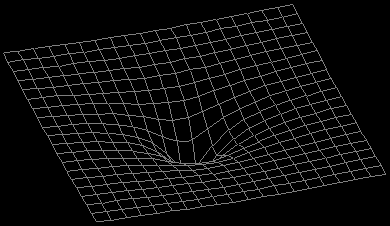 "to make the case more general, in every gravitational field, a clock will go more quickly or less quickly, according to the position in which the clock is situated (at rest). For this reason it is not possible to obtain a reasonable definition of time with the aid of clocks which are arranged at rest with respect to a body of reference."
"to make the case more general, in every gravitational field, a clock will go more quickly or less quickly, according to the position in which the clock is situated (at rest). For this reason it is not possible to obtain a reasonable definition of time with the aid of clocks which are arranged at rest with respect to a body of reference."
"Hence the idea of a straight line also loses its meaning."
pp. 81-82.

"The method of Cartesian co-ordinates must then be discarded, and replaced by another which does not assume the validity of Euclidean geometry for rigid bodies. . . .
the situation depicted here corresponds to the one brought about by the general postulate of relativity"
p. 86.
Non-Euclidean space refers to the reality that the Earth and Sun are not existing on a flat plane; instead according to Einstein's equations space-time is shaped as a saddle where the circumference of a circle is not equal to 2 π r .
"In gravitational fields there are no such things as rigid bodies with Euclidean properties; thus the fictitious rigid body of reference is of no avail in the general theory of relativity. The motion of clocks is also influenced by gravitational fields, and in such a way that a physical definition of time which is made directly with the aid of clocks has by no means the same degree of plausibility as in the special theory of relativity."
p. 98.
Displacement of spectral light frequencies
"Apart from this one [variation in the speed of Mercury's orbit about the sun], it has hitherto been possible to make two deductions from the theory which admit of being tested by observation, to wit, the curvature of light rays by the gravitational field of the sun, and the displacement of the spectral lines of light reaching us from large stars, as compared to the corresponding lines for light produced in an analogous manner terrestrially. These two deductions form the theory have both been confirmed. [in 1919 and in 1924.]
p. 104.
"We should learn from Bell, Einstein, and so many others to be awake to what confronts us, to face it clearly and carefully, and to be ready to transform boldly our most habitual ways of seeing." N1
 Albert Einstein, Relativity: The Special and General Theory. Robert W. Lawson, trans. New York: Crown Publishers (1916) 1961..
Albert Einstein, Relativity: The Special and General Theory. Robert W. Lawson, trans. New York: Crown Publishers (1916) 1961..
"In every other respect, a comparison of the development of the special and general relativity theory is a tale of disparities. . . . Both in 1905 and 1915, Einstein presented new fundamental principles."
"The New Dynamics." Subtle is the Lord: The Science and Life of Albert Einstein. Abraham Pais Oxford: Oxford University Press, 1982.p. 266.
N1. Arthur Zajonc, Catching the Light, New York: Oxford University Press, 1993. p 316.
John Norton's History of General Relativity.
Einstein the man | Einstein's Cosmos | On Albert Einstein | The famous equation
Einstein's notebooks
Galileo Galilei | Murray Gell-Mann | Michio Kaku | Jacob Bronowski | Stephen Hawking | Ernst Mayr | Ian Tattersall | Charles Darwin | Fritjof Capra

.gif)

